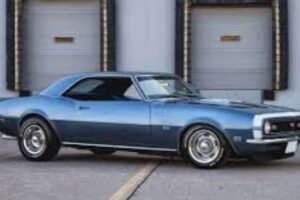Vintage and classic vehicles hold a special place in the hearts of enthusiasts and collectors alike. These timeless automobiles are not just modes of transportation; they represent pieces of history and craftsmanship. However, insuring these cherished possessions comes with its own set of considerations and challenges. In this article, we delve into the world of insurance for vintage or classic vehicles, exploring the nuances and importance of securing proper coverage for these prized possessions.
Understanding Vintage and Classic Vehicles
Defining Vintage and Classic Cars
Vintage and classic vehicles are typically categorized based on their age, rarity, and historical significance. While definitions may vary, vintage cars are generally those manufactured between 1919 and 1930, while classic cars are typically at least 20 years old and maintained in original or restored condition.
Value Appreciation
Unlike modern cars that depreciate over time, vintage and classic vehicles often appreciate in value, making them valuable investments for owners and collectors.
The Importance of Specialized Insurance
Unique Risks
Vintage and classic cars face unique risks due to their age, limited availability of replacement parts, and specialized maintenance requirements. Standard auto insurance policies may not adequately cover these risks.
Agreed Value Policies
Many insurance companies offer agreed value policies for vintage and classic cars, where the insurer and owner agree upon the vehicle’s value upfront. In the event of a total loss, the insurer pays out the agreed-upon value, providing peace of mind to owners.

Factors Affecting Vintage and Classic Car Insurance
Vehicle Usage
Insurance premiums for vintage and classic cars often take into account the frequency and manner of vehicle usage. Limited mileage policies may offer lower premiums for cars used sparingly or only for special events.
Storage and Security
Storage conditions and security measures also influence insurance premiums. Cars stored in secure garages and equipped with anti-theft devices may qualify for lower rates.
Conclusion
Insurance for vintage and classic vehicles is essential for protecting these valuable assets against unforeseen risks. Understanding the unique needs of vintage and classic cars and securing specialized coverage tailored to their requirements is crucial for owners and collectors alike.
With the right insurance policy in place, owners can enjoy their prized vehicles with confidence, knowing that they are adequately protected against potential losses.



